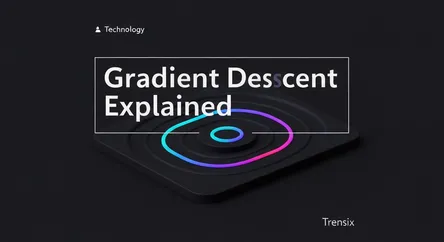Technology
Gradient Descent Explained

Discover Gradient Descent, the core optimization algorithm that powers machine learning models by finding the best parameters to minimize errors.
What is it?
Gradient Descent is a foundational optimization algorithm used to train machine learning models. Imagine trying to find the lowest point in a foggy valley. You'd look at the slope where you're standing and take a step in the steepest downward direction. Gradient Descent does exactly this, but mathematically. It iteratively adjusts a model's internal parameters (like weights) to minimize a 'cost function,' which measures the difference between the model's predictions and the actual outcomes. By repeatedly calculating the gradient (the slope) and taking small steps in the opposite direction, it gradually 'descends' towards the point of minimum error, making the model more accurate.
Why is it trending?
The explosion of deep learning and complex neural networks is directly fueled by Gradient Descent and its more advanced variants (like Stochastic Gradient Descent and Adam). As models become larger and are trained on massive datasets, this algorithm provides an efficient way to find the optimal settings. It's the engine that makes training everything from large language models to sophisticated image recognition systems possible, forming the bedrock of modern artificial intelligence development.
How does it affect people?
Gradient Descent is the invisible force that refines the AI services we use daily. When Netflix recommends a movie, Gradient Descent has helped tune the recommendation engine to your tastes. It's the process that trains voice assistants like Siri and Alexa to better understand commands and enables the facial recognition that unlocks your phone. It allows algorithms to 'learn' from data, leading to more accurate, personalized, and useful applications that seamlessly integrate into our digital lives, from spam filtering in our email to route optimization in navigation apps.